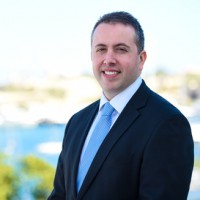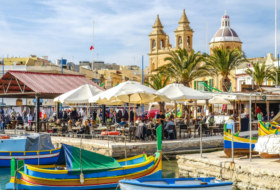
Cells, from captives to insurtechs
The flexibility and ever growing uses of protected cells never ceases to amaze me. In the European Union, Malta is enabling cells not only for use in traditional captives, reinsurance or insurance linked security models, but also in directly writing consumer business or as fronting vehicles.
As a full EU member state, Malta enjoys the freedom to provide services and directly cover risks throughout the EU and the EEA. It is common for captives and cells in Malta to be profit centres by including customer and ancillary business. Besides added revenue, the diversification enables capital efficiencies.
Cell formations in Malta, and globally, already outnumber those of standalones. The surge in budding InsurTechs are learning the opportunities of protected cells as platforms to experiment, incubate or launch new technology-driven business models. These are exciting times to work in this sector, surrounded by so many new, innovative ideas that would not have been possible just a few years ago.
Disintermediation
Billions of euros of capital are flooding into the hundreds of new InsurTech start-ups around Europe and the world. Technology has the potential of transforming the entire insurance value chain including product development, customer acquisition, underwriting and claims management.
InsurTechs can accelerate the disintermediation of traditional distribution channels. While the strategy of large incumbent carriers has tended to include acquisition or investment in such ventures, our experience is that protected cells have helped those with an intermediary or technology background to take over the primary risk carrier role. The desire from some brokers and intermediaries with successful profitable schemes to move from a focus on commissions and fees to a focus on underwriting profits through protected cells has been further boosted by the introduction of the EU Insurance Distribution Directive.
When an organisation realises that it has more data, risk or technology knowledge and ideas than the primary carriers, and it is confident in the potential profitability, it begs the question, why not become the principal and tap into the reinsurance market for support? This is an old idea for captives but one that is dawning on intermediaries, InsurTechs and organisations outside the insurance sector.
With the increasing purchasing power of millennials and digital natives, more insurance is being purchased directly online. With full access to the EU single market, cells based in Malta are ideal digital insurers.
Cells targeting consumer business are a growing niche for Atlas PCC with its origins, expertise and risk appetite as an insurer. Atlas traces its almost 100-year history to family businesses representing well-known British and French insurance companies. These merged to form one of the major local insurers in Malta. EU Accession and local PCC legislation provided the opportunity of international expansion through third party owned cells. In 2006, Atlas became the first direct insurer to convert to a PCC in the European Union, and the first licensed PCC in Malta.
Incubation
Cells can enable new ideas to be incubated or new business models to be attempted at a far lower cost than a standalone insurer, and without the dependency on a third party principal. This helps organisations that are often wary of indirectly providing intellectual property to insurance principals or fronters in their home country.
In order to spur innovation, InsurTechs often adopt a philosophy to fail fast, fail cheap, and learn continuously. Fitting with this philosophy, should ventures turn out to be unviable in practice, despite different model iterations, these can typically be closed faster in a cell than a standalone company, and the whole enterprise would have come at far lower cost and up front capital commitment.
The surge in budding InsurTechs are learning the opportunities of protected cells as platforms to experiment, incubate or launch new technology-driven business models.
Breaking barriers
PCCs help break the barrier to entry for new captives or start-up insurers unintentionally created by regulation. A new breed of RegTechs are emerging in time to reduce such burdens, however no solution presents as much promise as protected cells thanks to their capital, cost and governance efficiencies especially in a Solvency II environment.
Well-resourced PCCs can provide cells with the regulatory expertise, infrastructure and economies of scale only usually found in well-developed incumbent insurers. Over the past decade, in preparation for the Solvency II regime that went live in 2016, Atlas kept adapting its risk governance and reporting procedures in a way that allows cells to focus on their specific risks and business plan while its core provides broader support to ensure regulatory and good governance requirements are met.
As a single legal entity, Atlas has one board, yet a degree of autonomy is provided to cells through committees that have representatives of the cell owner together with Atlas representatives under the board’s delegated authority. This enables a faster decision making process.
Common key functions including actuarial, risk management, compliance and internal audit apply across the PCC. For Solvency II, such can produce a single Own Risk Solvency Assessment for the entire PCC. The same applies to reporting and disclosure requirements, with one Regulatory Supervisory Report and Solvency Financial Condition Report and all resources in place to meet other quarterly and annual reporting as one single legal entity.
Capital
Under Solvency II, a cell owner will typically only need to invest own funds equivalent to the cell’s notional solvency capital requirement, which, with small undertakings, often falls far below the typical standalone insurer minimums.
As one of the leading insurers in Malta, Atlas’s core maintains substantial unrestricted surplus funds over Solvency II capital requirements that, subject to our risk appetite, can be lent to cells. At all times, cells retain full protection of their assets, from liabilities of the core or other cells per legislation.
Soft-Market
The prolonged soft market and increased regulatory requirements could on the surface reduce the captive appeal. Cells, however, can enable more efficient risk financing. Thanks to current lower reinsurance prices and wider capacity, risk managers should review which risks to retain and which to cede. Diversification with additional lines helps improve capital efficiency, whether targeting own or third party risks for added profits. Captives also help better manage deductibles, claims handling processes and data on risks and losses. Improved control extends to policy terms and choice of claims service providers. The built earnings create further capacity for greater risk taking for the parent.
Brexit
The uncertainty behind Brexit, particularly on what market access UK and Gibraltar will be granted, is an opportunity for Malta to provide support and solutions. In the medium term, Malta will likely be the only member of the EU single market with insurance protected cell legislation. Should a hard Brexit become a reality, companies could maintain direct access to 30 member states of the EEA, through Maltese Cells. Such could retain or reinsure back the risks.
Expertise
Atlas PCC was acclaimed internationally when it won Best Cell Captive Initiative for Captive Review’s 2016 European Captive Services Awards. This was yet another recognition of the expertise our team has built over the past decade in this specialised sector, having assessed and implemented a variety of direct third-party, reinsurance and captive cells.
This is also recognised by leading global insurance management companies that use our independent facility for their clients with management outsourced back to them.
Where there are barriers to entry for captives and start-ups including InsurTechs, PCCs like Atlas enable such new entrants into the insurance market promoting innovation.



